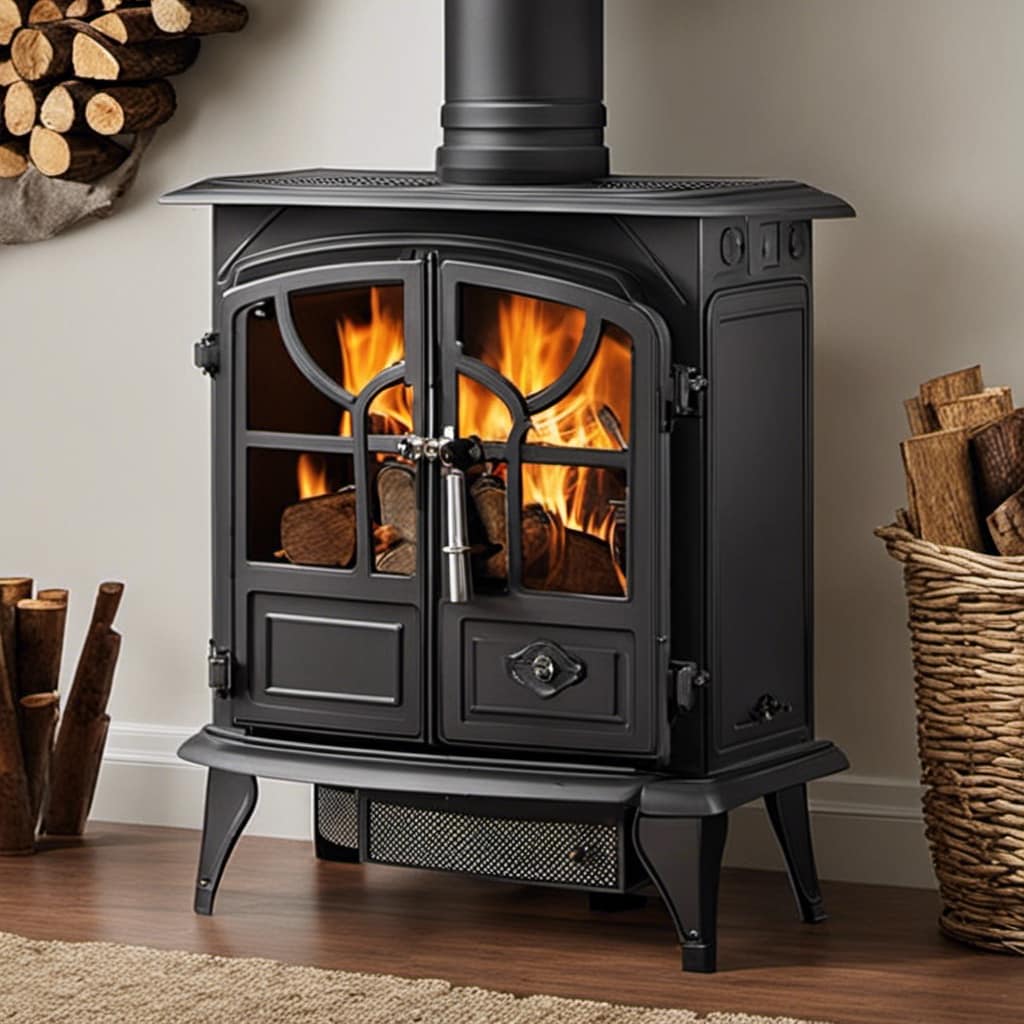Have you ever thought about what the best foundation is for a wood stove? Look no further! This article will explore a variety of flooring options that are suitable for supporting a wood stove, along with the fire-resistant materials required to create a secure base for your stove.
We’ll also explore building codes and safety regulations, considerations for placing a wood stove on carpeted surfaces, and how to properly insulate and protect the surroundings of your wood stove.
Let’s get started!
Key Takeaways
- Tile and stone are suitable materials for wood stove placement due to their heat resistance.
- Non-combustible materials such as tile, stone, metal, and concrete can be used for wood stove platforms.
- Compliance with building codes and safety regulations, including obtaining permits, is important for a secure wood stove installation.
- When placing a wood stove on carpeted surfaces, it is important to use a non-combustible base, maintain clearance, and install a heat shield to protect the carpet.
Types of Flooring for Wood Stove Placement
I’m considering using tile or stone flooring for my wood stove placement. When it comes to flooring options for a wood stove, it’s important to choose heat resistant materials. Tile and stone are both excellent choices due to their ability to withstand high temperatures without damage or warping.
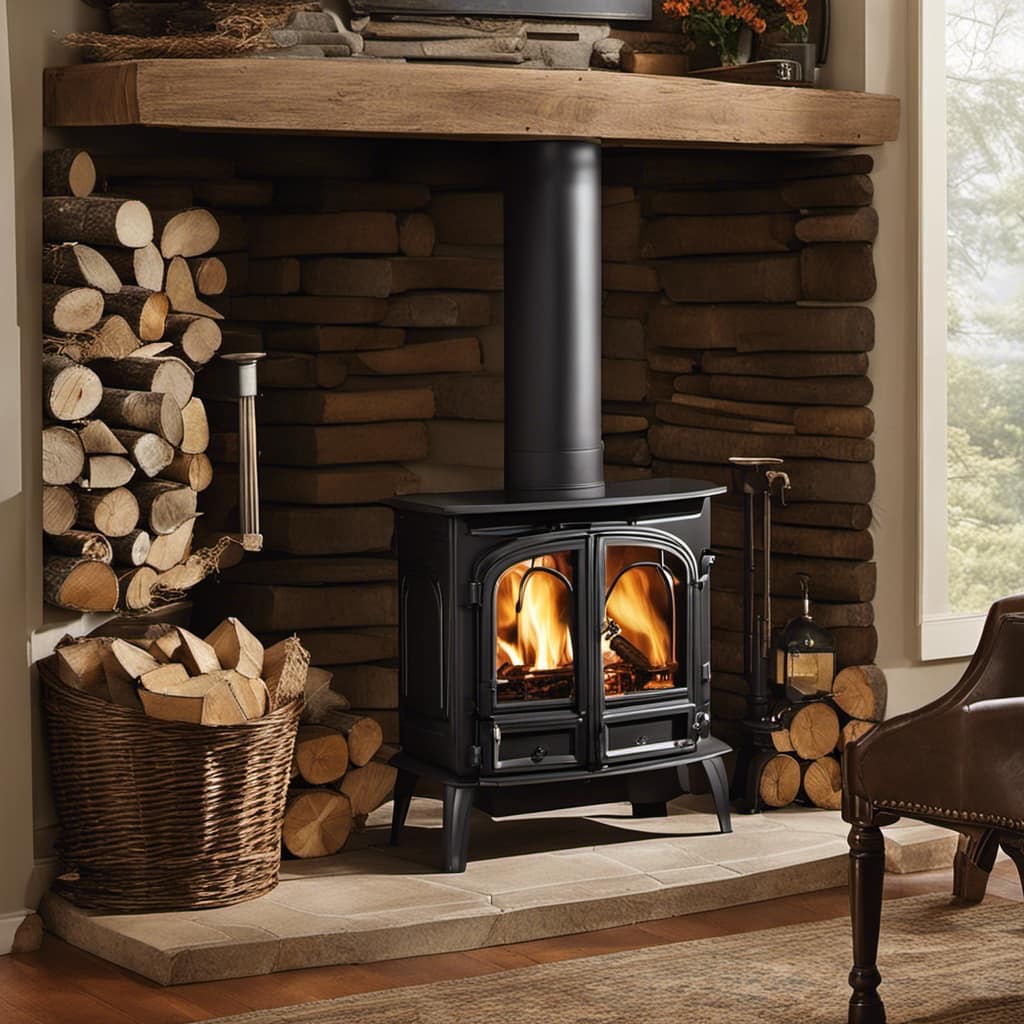
Not only are they durable, but they also provide a stylish and elegant look to any room. Tile flooring, such as ceramic or porcelain, offers a wide range of design options and is easy to clean. On the other hand, stone flooring, like slate or granite, adds a natural and rustic touch to the space.
Both options are reliable and offer the necessary heat resistance for a wood stove. Moving forward, let’s explore non-combustible materials for wood stove platforms.
Non-Combustible Materials for Wood Stove Platforms
I usually use materials like tile, stone, or metal for my wood stove platform to ensure it’s non-combustible. When it comes to creating a safe and functional fireplace hearth, it’s important to choose heat-resistant materials that can withstand the intense heat generated by a wood stove. Here are four excellent options to consider:
Tile: Ceramic or porcelain tiles are popular choices due to their durability and heat resistance. They come in a variety of colors and styles, allowing you to customize your wood stove platform to match your décor.
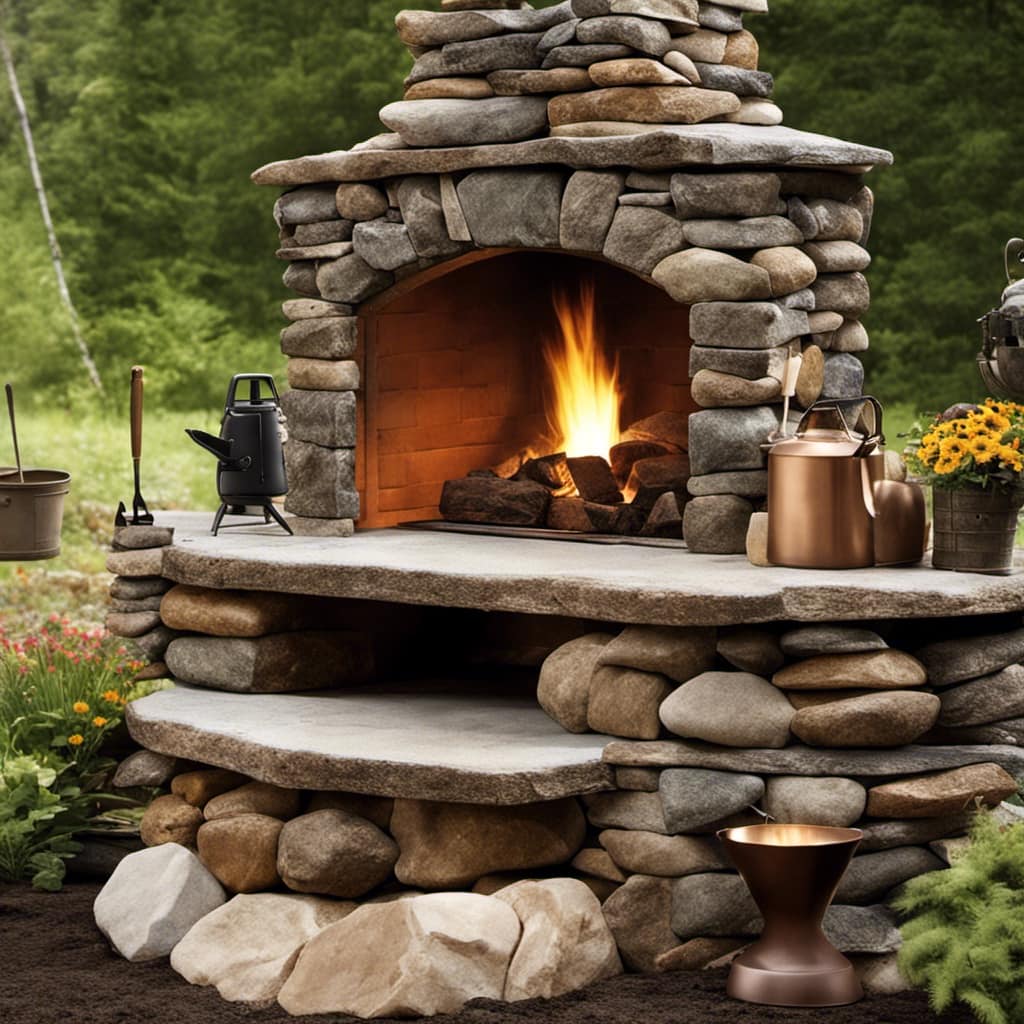
Stone: Natural stone, such as granite or slate, isn’t only non-combustible but also adds a touch of elegance to your fireplace hearth. Its natural heat resistance makes it a reliable choice for wood stove platforms.
Metal: Steel or cast iron plates are another viable option for a non-combustible wood stove platform. Metal not only offers excellent heat resistance but also provides a sleek and modern look.
Concrete: A concrete platform isn’t only non-combustible but also offers exceptional heat retention properties. It can be customized with various finishes to suit your style.
Building Codes and Safety Regulations for Wood Stove Bases
When it comes to building a wood stove platform, it’s crucial to follow the local building codes and safety regulations for ensuring a secure and compliant installation. Building permits are an important part of this process, as they ensure that the construction meets the necessary requirements and is safe for use.
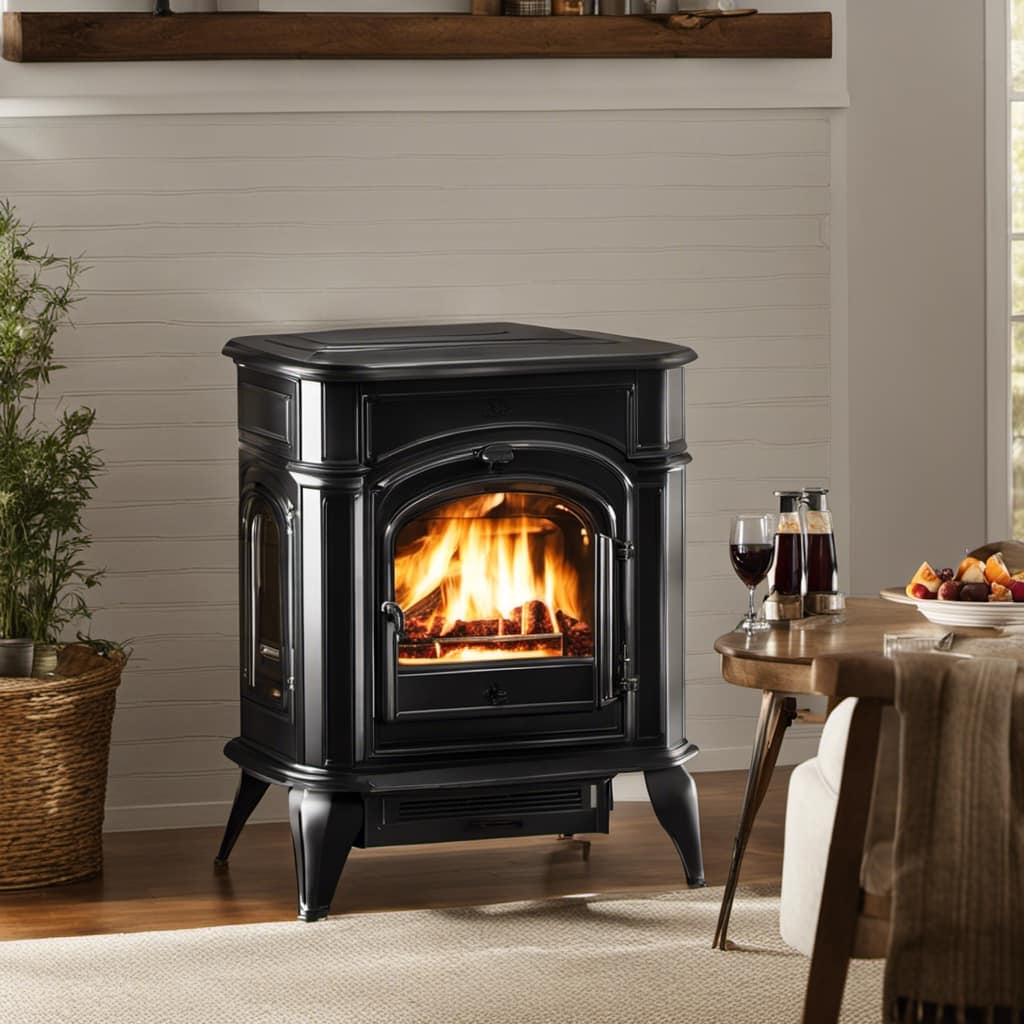
Before starting the project, it’s important to check with your local building department to determine if a permit is required. Additionally, ventilation requirements must be considered to ensure proper airflow and prevent the buildup of harmful gases. Proper ventilation helps to maintain a safe and healthy environment by allowing for the efficient combustion of wood and the removal of smoke and pollutants.
Following these regulations and obtaining the necessary permits will help to ensure a safe and compliant wood stove installation.
Considerations for Wood Stove Placement on Carpeted Surfaces
Having a wood stove on a carpeted surface may pose fire safety risks due to the potential for heat damage or ignition of the carpet fibers. To ensure the safe placement of a wood stove on a carpeted surface, there are several important considerations to keep in mind:
Use a non-combustible base: Place the wood stove on a non-combustible base, such as a metal or tile hearth pad. This will provide a barrier between the stove and the carpet, reducing the risk of fire.
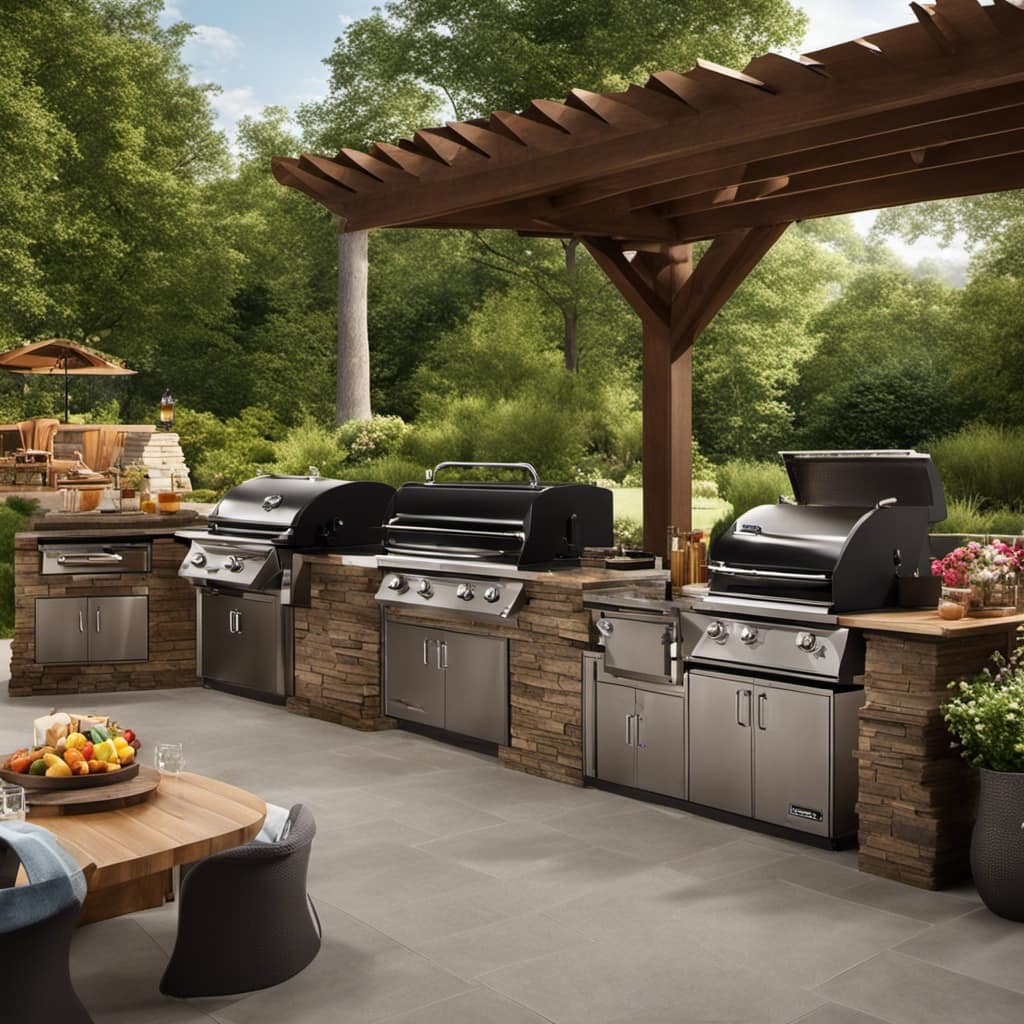
Maintain proper clearance: Ensure that there’s sufficient clearance between the wood stove and the surrounding carpet. Refer to the manufacturer’s guidelines for the recommended clearances to prevent heat damage.
Install a heat shield: Consider installing a heat shield on the wall behind the wood stove. This will help to reduce the heat transfer to the carpet, minimizing the risk of ignition.
Regularly inspect the carpet: Regularly inspect the carpet around the wood stove for any signs of heat damage or discoloration. If any issues are detected, take immediate action to address them and ensure the safety of your home.
How to Properly Insulate and Protect Wood Stove Surroundings
To properly insulate and protect the surroundings of my wood stove, I’ll install a heat shield on the wall behind it. Insulation is crucial to prevent heat from escaping and causing damage to nearby walls and furniture.
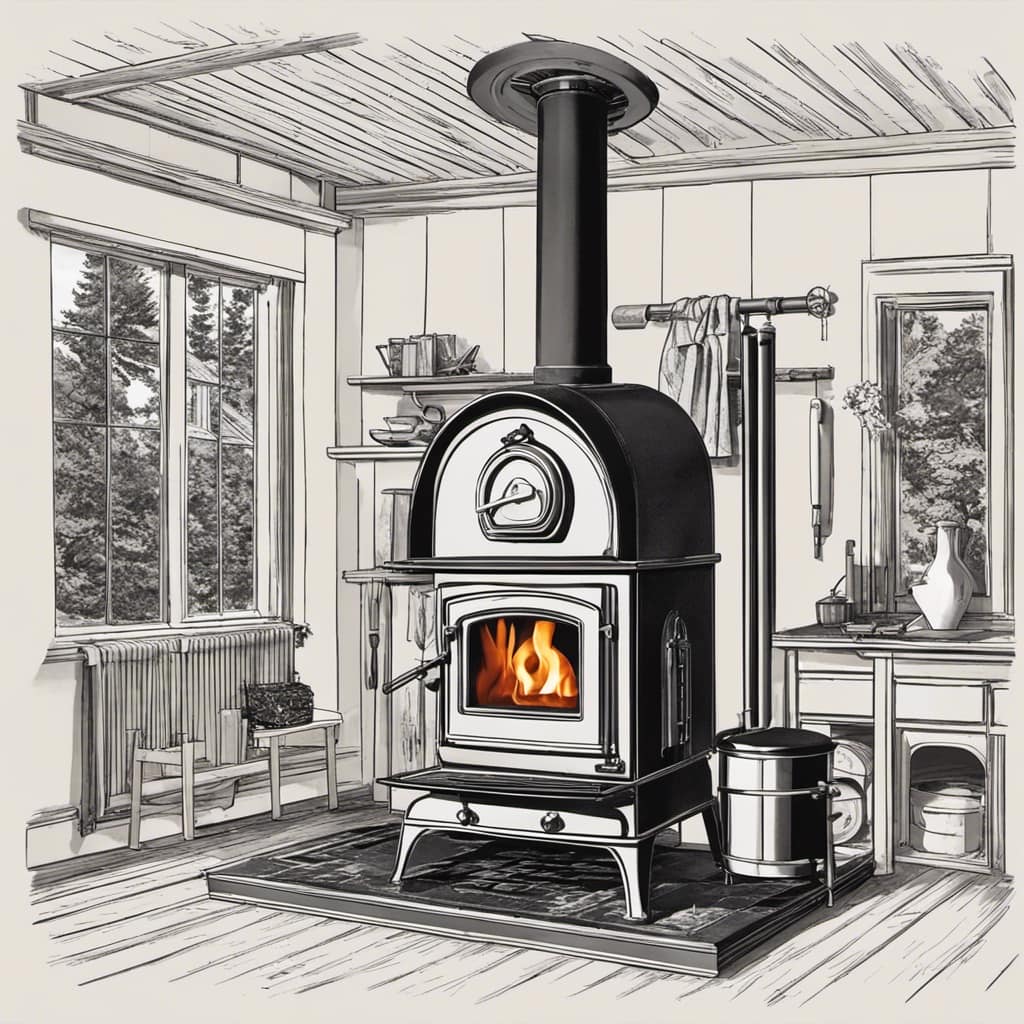
There are various insulation techniques that can be used, such as using heat resistant materials like ceramic fiber board or fireproof insulation blankets. These materials are designed to withstand high temperatures and prevent heat transfer.
It’s important to make sure that the heat shield is properly installed, with a minimum air gap between the shield and the wall. This air gap acts as an additional layer of insulation and helps to dissipate the heat.
Can a Hybrid Wood Stove Sit on the Same Surface as a Regular Wood Stove?
Yes, a hybrid wood stove explained can sit on the same surface as a regular wood stove. However, it’s important to ensure that the surface can handle the weight and heat produced by the hybrid wood stove. Additionally, you should follow the manufacturer’s guidelines for installation to ensure safety and proper functioning.
Frequently Asked Questions
Can a Wood Stove Be Placed Directly on a Wooden Floor?
Yes, a wood stove can be placed directly on a wooden floor, but it is not recommended due to safety concerns. To mitigate the risk, alternative flooring options such as tile, stone, or heat-resistant materials should be considered.
Is It Necessary to Have a Building Permit for Installing a Wood Stove?
It’s important to know if a building permit is required for installing a wood stove. Safety regulations and considerations must be followed. I’ll explain the process and requirements in detail.
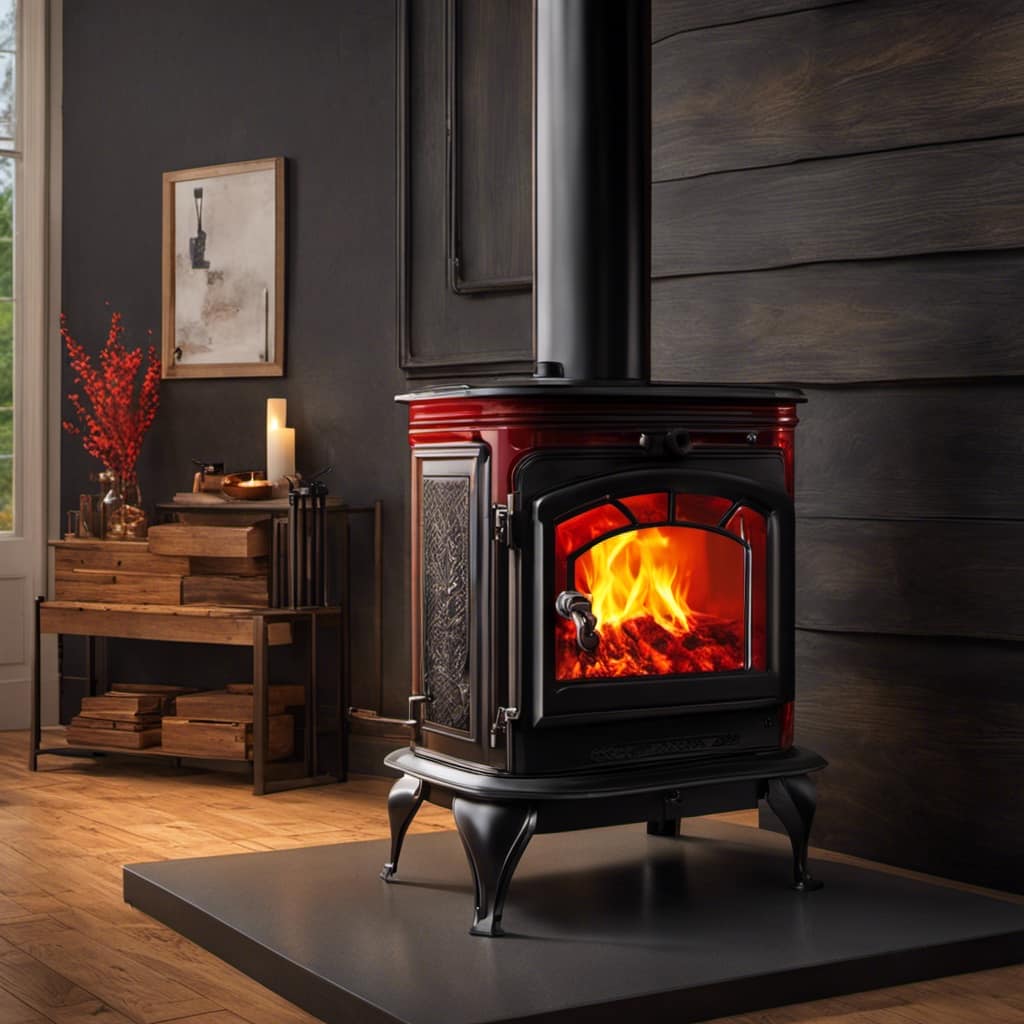
Can a Wood Stove Be Placed on a Concrete Slab?
A concrete slab is a suitable foundation for a wood stove as it provides stability and heat resistance. However, tile is also a viable option, offering aesthetic appeal and easier cleaning. Consider the pros and cons before making a decision.
What Are the Clearance Requirements for a Wood Stove on a Non-Combustible Platform?
Clearance requirements for a wood stove on a non-combustible platform vary, but generally, there should be a minimum of 36 inches of clearance from combustible materials. This ensures safety and prevents fires.
Are There Any Specific Guidelines for Placing a Wood Stove on a Vinyl or Laminate Flooring?
When placing a wood stove on vinyl flooring, it is important to follow specific guidelines to prevent damage and ensure safety. Similarly, laminate flooring can be at risk of damage from the heat.
Conclusion
In conclusion, when it comes to placing a wood stove, it’s essential to consider the type of flooring, non-combustible materials for the platform, and adhere to building codes and safety regulations.

Additionally, if placing the stove on a carpeted surface, special considerations should be taken. Proper insulation and protection of the stove surroundings are also crucial.
Just like a sturdy foundation supports a house, a well-prepared base ensures the safe and efficient operation of a wood stove.
Growing up surrounded by the vast beauty of nature, Sierra was always drawn to the call of the wild. While others sought the comfort of the familiar, she ventured out, embracing the unpredictable and finding stories in the heartbeat of nature.
At the epicenter of every remarkable venture lies a dynamic team—a fusion of diverse talents, visions, and passions. The essence of Best Small Wood Stoves is crafted and refined by such a trio: Sierra, Logan, and Terra. Their collective expertise has transformed the platform into a leading authority on small wood stoves, radiating warmth and knowledge in equal measure.





